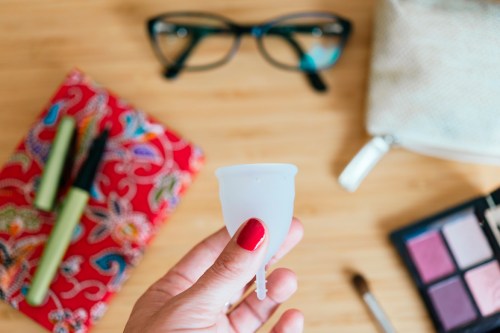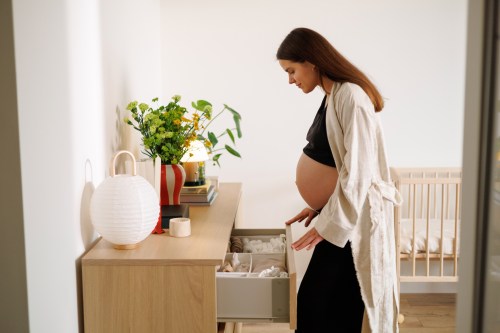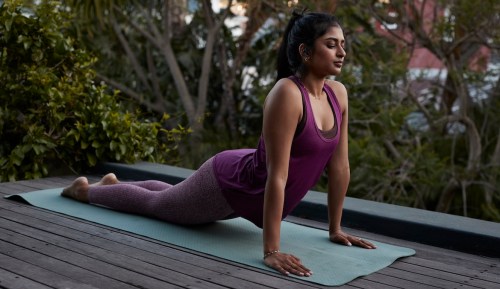Menstrual cups aren’t a new addition to the period-product market; in fact, the first usable commercial cup was patented in 1937. But since then, the product has been further refined and innovated, and now there are many options to consider in the space. But innovations aside, menstrual cup benefits to glean remain largely the same: they’re eco-friendly in that they’re reusable and cost-effective because, well, you only need one for quite some time.
Experts in This Article
board-certified OB/GYN and co-author of The Vagina Book: An Owner’s Manual for Taking Care of Your Down There
OB/GYN and an ambassador for The Hello Cup
“A menstrual cup is a recyclable, reusable, flexible cup that is placed inside of the vagina and is usually made of silicone, rubber, or medical grade thermoplastic elastomer,” says Jennifer Conti, MD, OB/GYN and Modern Fertility medical advisor. “It forms a tight seal inside the walls of the vagina to collect blood as opposed to absorbing blood like with tampons, pads, or period underwear.”
But is it a good fit for you and your needs? Below get expert opinions on menstrual cup benefits, any caveats to know about, and how to use one like a pro.
4 menstrual cup benefits
1. They’re eco-friendly
One of the biggest menstrual cup benefits, Dr. Conti says, is that they are reusable and therefore significantly reduce the amount of waste produced from traditional pads and tampons.
2. They’re affordable
Another menstrual cup benefit, according to Dr. Conti, is that while some may require more of an upfront investment than, say, a box of tampons, cups are way more affordable in the long run because you can reuse them for five to 10 years, depending on the brand.
3. They can hold more than a tampon
If you’re a heavy bleeder, menstrual cups may be a game-changer for you. “Menstrual cups can hold more than a typical tampon can—sometimes two to three times more depending on the cup,” says Nicole Sparks, MD, OB/GYN, an ambassador for The Hello Cup.
“Menstrual cups can hold more than a typical tampon can—sometimes two to three times more depending on the cup.” —Nicole Sparks, MD
You can also keep a menstrual cup in place for up to 12 hours (compared to a maximum of eight hours for leaving in a tampon). This makes menstrual cups super-handy for folks who don’t have the time or opportunity to change their period product throughout the day.
4. They help reduce odor
Menstrual cups can help temper any not-so-fun aromas that come with your period. “Menstrual cups can potentially reduce odor because, with the tight seal, blood is not readily exposed to air,” Dr. Sparks says. So if you’re self-conscious about period smell, it could be worth giving cups a try.
3 potential drawbacks of using menstrual cups to consider
1. There’s a learning curve
The menstrual cup benefits are great, but there are some downsides to using them as well—the biggest one being that there is definitely a learning curve (speaking from experience here). It can take a few cycles to get used to properly inserting and removing it. It can also take some time to find the right cup for your vagina in the first place.
“Each brand has a different design, and every vagina and cervix is a different shape,” Dr. Conti says. “If the cup is too small, you’ll have leakage. If it’s too big, it might be uncomfortable.” So there may be some trial and error in the beginning, but according to menstrual cups devotees, it’s smooth-sailing from there.
2. Cleaning your cup can be tricky
Like with changing out pads and tampons, cleaning your menstrual cup can potentially be a bit messy. There may be accidental spillage when you remove it, and it can be uncomfortable cleaning it in a public restroom. In these cases, Dr. Sparks recommends having a spray bottle or specialized sanitizing wipes handy. “Over time, as you get more comfortable using a menstrual cup, you will develop a solid emptying and cleaning routine that works for you,” Dr. Sparks reassures.
3. It may dislodge an IUD
Another important thing to note before giving menstrual cups a try is how they can potentially affect an IUD. “You can wear a menstrual cup with an IUD in place, but there is a potential for the device to dislodge,” Dr. Sparks says. “If this is a concern, ask your provider to make sure your [IUD] strings are cut short enough for menstrual cup use.”
How to use, insert, and care for a menstrual cup like a pro
1. Get the right size
The key to finding the best menstrual cups is finding the perfect size for you. For teenagers and those who haven’t had children, Dr. Sparks recommends using the smallest cup available. If you want to be extra sure you’re getting the right size, you can measure your own cervix using clean hands at home.
2. Read the instructions
Although you may be eager to take your new menstrual cup for a test drive, Dr. Sparks advises carefully reading the instructions first. Each brand may have slightly different directions on how to insert and remove the cup properly. Knowing the correct instructions can make all the difference between an easy insertion and removal or a frustrating and messy one.
3. Try different positions
If you have trouble getting your menstrual cup in place, Dr. Sparks encourages trying different positions until you find one that makes it easy to insert. “Maybe it is easier for you to squat, lay down, or even place the cup while in the shower. Find what works for you and stick with it,” Dr. Sparks says.
4. Wash your cup properly
Since menstrual cups are reusable, cleanliness is of the utmost importance. Dr. Sparks recommends rinsing your cup after each use. “After each menstrual cycle, be sure to sanitize your cup for a few minutes in boiling water and store it in the bag provided until your next period,” Dr. Sparks says.
If you don’t have access to running water, keep a spray bottle or sanitizing wipes specifically for menstrual cup use in your bag.
Choosing the right menstrual hygiene products
The decision of which menstrual hygiene products to use really comes down to personal preference and what best fits your lifestyle. “If you have had multiple children or are older, you may have uterovaginal prolapse—where the pelvic organs prolapse into the vagina—which can cause some difficulty in using a menstrual cup,” Dr. Sparks says. “Also, make sure you’re not allergic to the products your menstrual cup is made out of.”
If you think menstrual cups could be a good attention to your period care kit, Dr. Sparks ultimately suggests trying various products to test via trial and error what is most your vibe.
Sign Up for Our Daily Newsletter
Get all the latest in wellness, trends, food, fitness, beauty, and more delivered right to your inbox.
Got it, you've been added to our email list.











